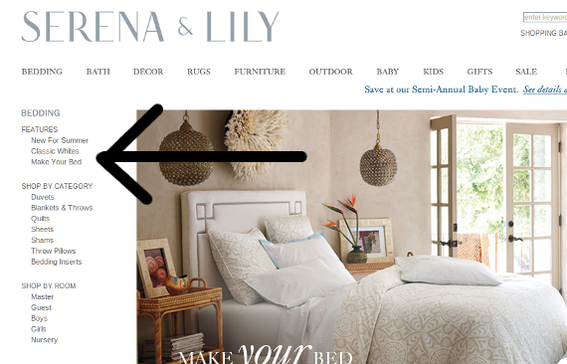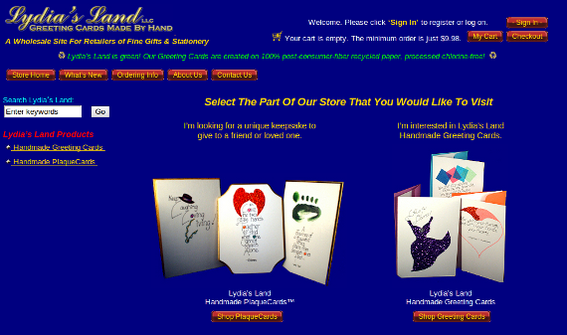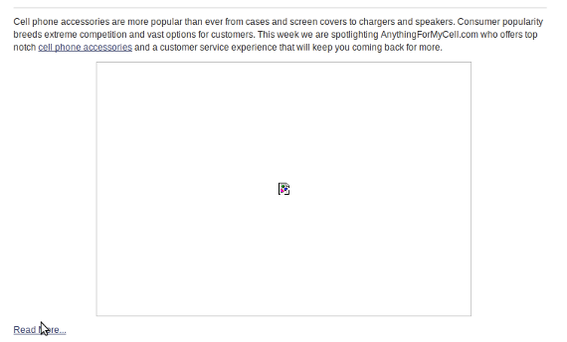What makes great ecommerce-site aesthetics, layout, and even features are a matter of opinion. But there are some things that simply are not smart for online retailers.
Online retail sites have a distinct job: selling something. While site design can be a matter of taste, I believe there are at least a few things to avoid regardless. Recently, I surveyed more than 100 ecommerce sites running on Miva Merchant, Shopify, Magento, and other leading platforms as part of a site resign project. I found five things that I just hated to see.
1. Tiny Fonts
Mobile shopping is on the rise. An ecommerce site that I help to manage has seen a tenfold increase in mobile visits since July 2010. Now one in five visitors is using a mobile device. What’s more, the Pew Internet & American Life Project reported in May 2012 that 46 percent of American adults owned a smartphone and, presumably, access the Internet.
Separately, Pew said that 29 percent of American adults own either an Internet-enabled e-reader or a tablet as of January 2012.
So with so many potential mobile visitors, why would any developer use small fonts that can be (a) difficult to read on a mobile device and (b) difficult to click on a mobile device without zooming and swiping repeatedly.
Small fonts in navigation can be difficult to click from mobile devices.
Please don’t use tiny fonts — think 12 point or larger.
2. No Shipping Quote
Customers visiting an online retailer expect to know what they are going to have to pay, including shipping. But, crazy as it sounds, there are Internet stores that expect a shopper to consummate an order, hand over credit card information, and then wait to learn how much the shipping fee will be.
Here is an actual shipping policy displayed on one site’s checkout page.
This retailer “offers the following shipment options: UPS ground shipping, UPS 2nd Day Air and UPS Next Day Air. We also ship with US Postal service for any order that has been placed from an APO address, out of country or Hawaii. Shipping costs will be calculated after your order has been received and will be added to your order when it is fulfilled.”
Notice that last bit.
“Shipping costs will be calculated after your order has been received and will be added to your order when it is fulfilled.”
Always let shoppers know what shipping costs become they have to complete the order.
3. Poor Graphic Design
During a lifetime of shopping, I have rarely walked into a brick-and-mortar store that was dirty, smelly, and painted odd colors. I am not suggesting that such establishments don’t exist, but simply that I don’t like to shop there. I am just not sure that I want to give the cashier of that ugly store my credit card.
Several academic studies — including Jennifer Chen’s “The Impact of Aesthetics on Attitudes Towards Websites” from July 2009 and Patrick J. Lynch’s “Aesthetics and Trust: Visual Decisions About Web Pages” from 2010 — indicate that shoppers judge site design and decide how trustworthy a business is based on how good it looks.
“The design and presentation of a website is strongly visual and users are known to make aesthetic judgments of a site very quickly,” Chen wrote. “As the website likability and credibility increases so does the likelihood of purchasing from the site.”
Site aesthetics are important for building customer trust.
Don’t make ugly websites.
4. Broken Stuff
Dead links, missing images, flyouts that do not fly out, and even broken expectations can all lead to a poor user experience.
Ecommerce websites require a lot of resources, including images, and many links. With so many moving parts, it is not uncommon for something to go wrong — absolute paths in anchor tags version relative ones can be a cause of broken links as an example.
Online merchants need to diligently test and retest to make sure that everything on the site works.
Broken images make a site look unprofessional.
Don’t let broken stuff ruin a site.
5. No Blog
Perhaps not as obvious as broken links and bad site design, not having a blog left me wanting. When I shop online I want to connect with a merchant in a way that product pages alone cannot.
What’s more, blogs can be a source of great content that keep shoppers coming back.
Do not forget to blog.




